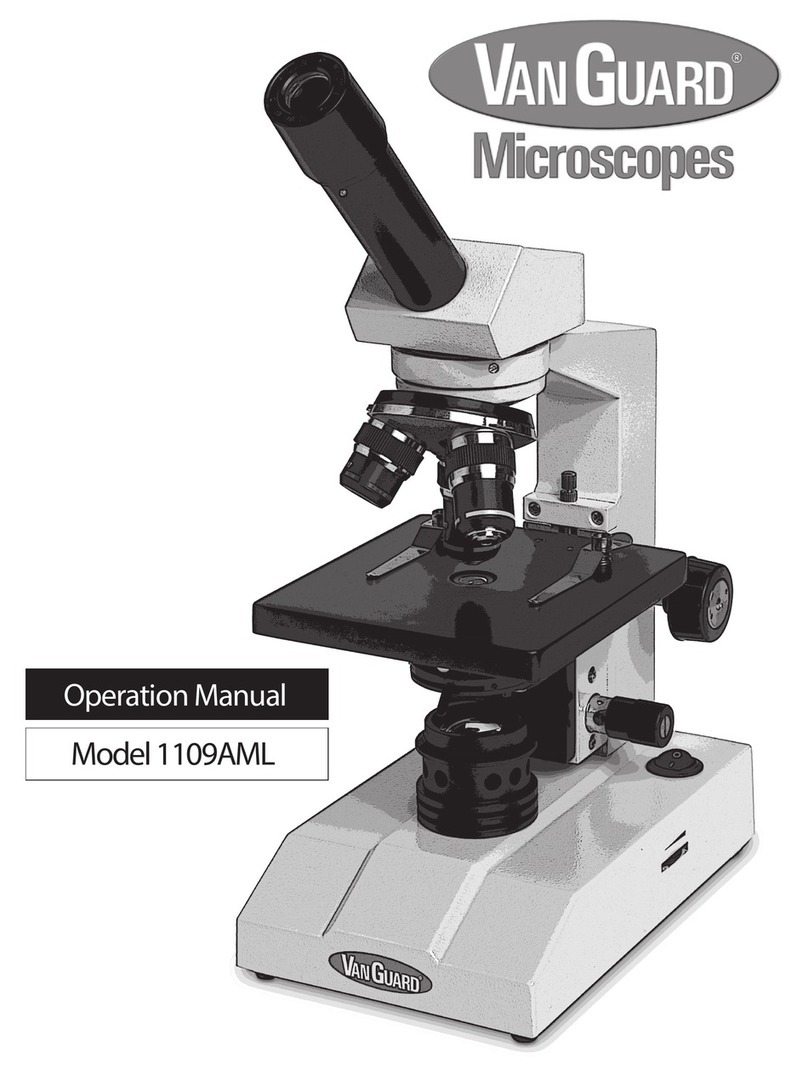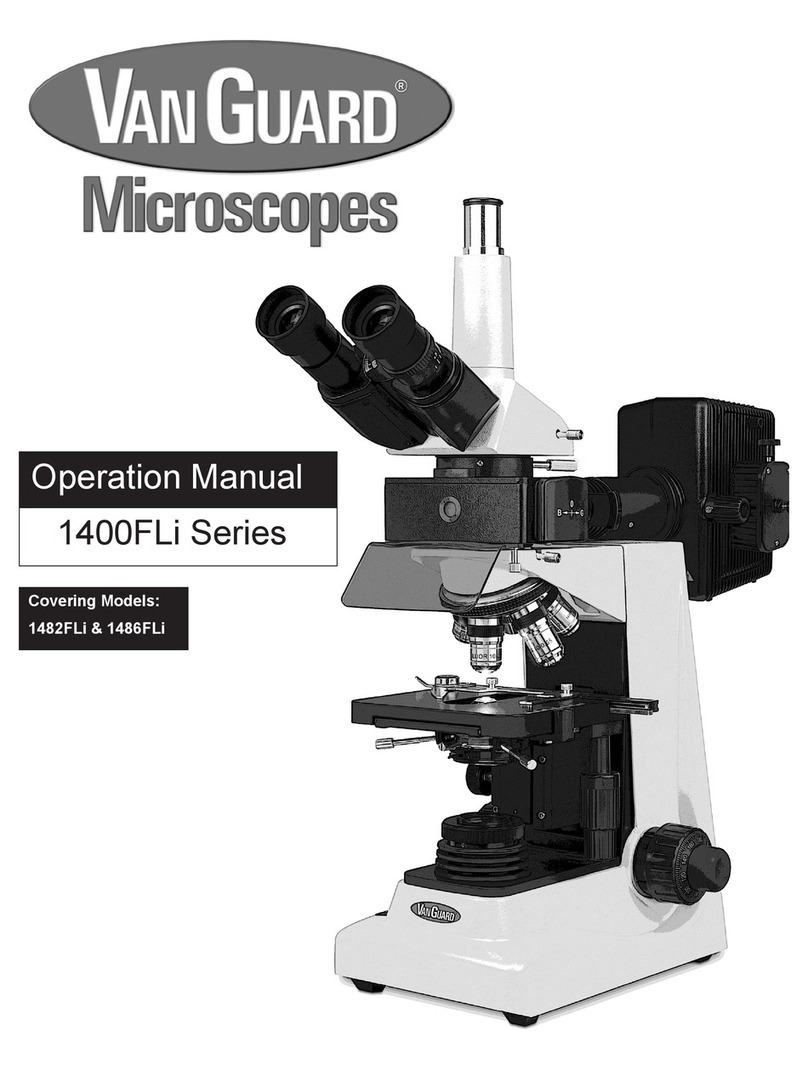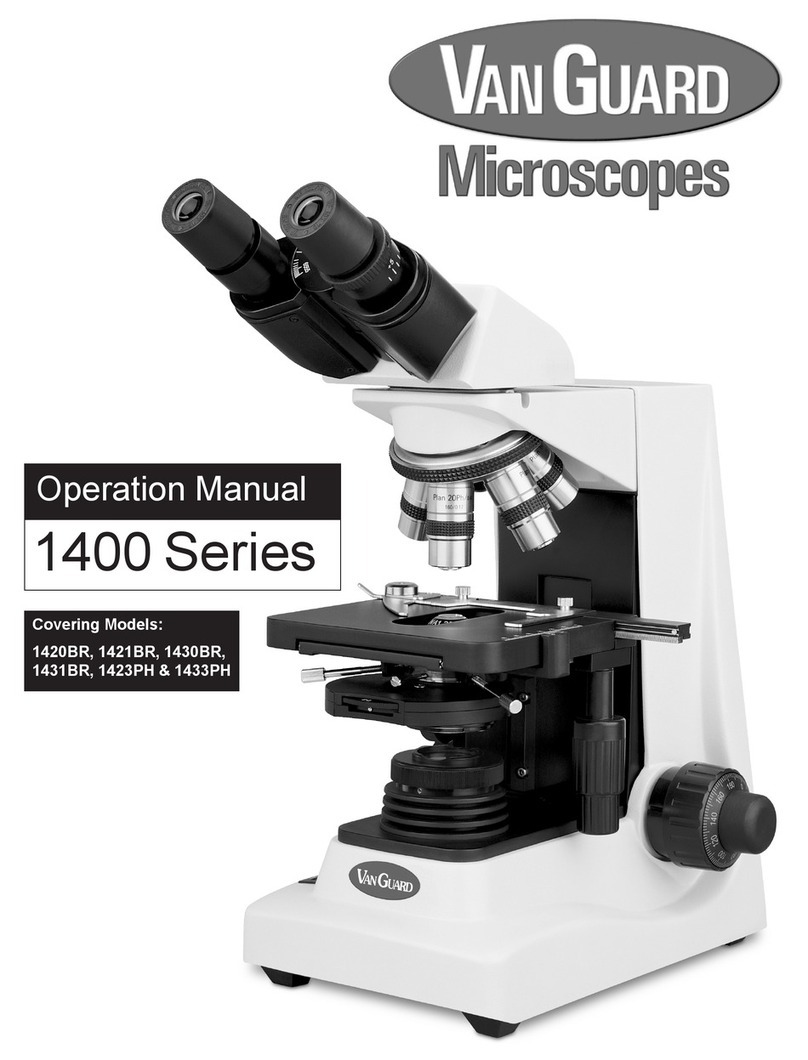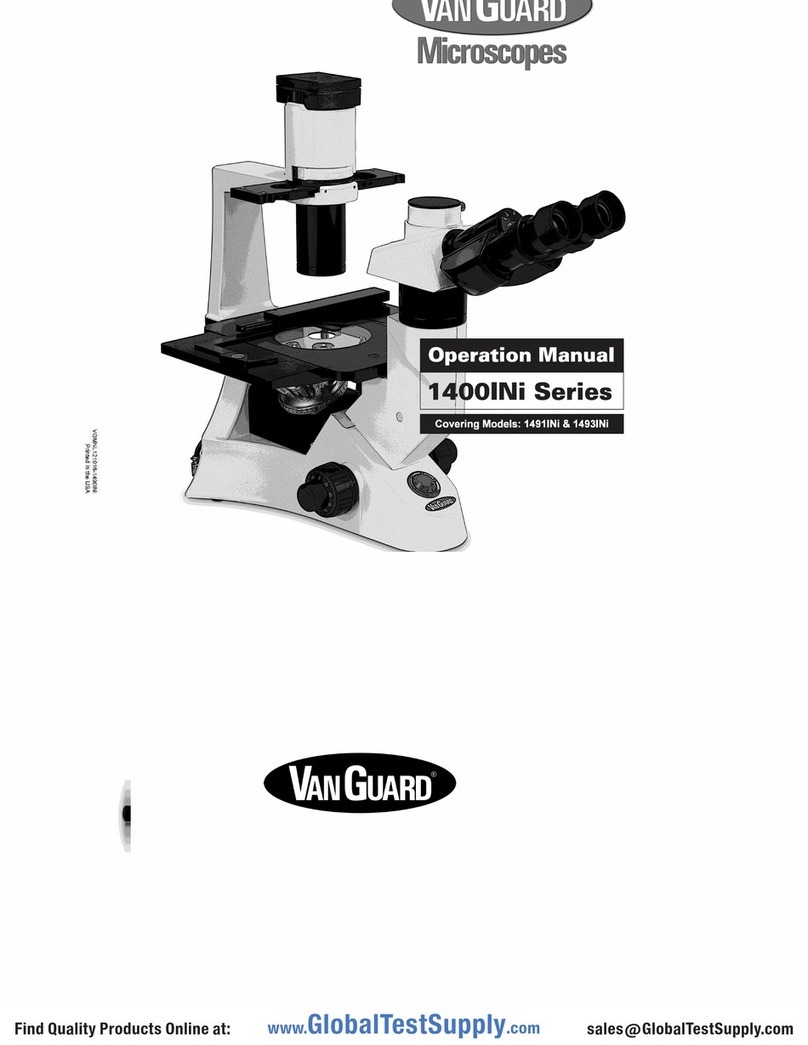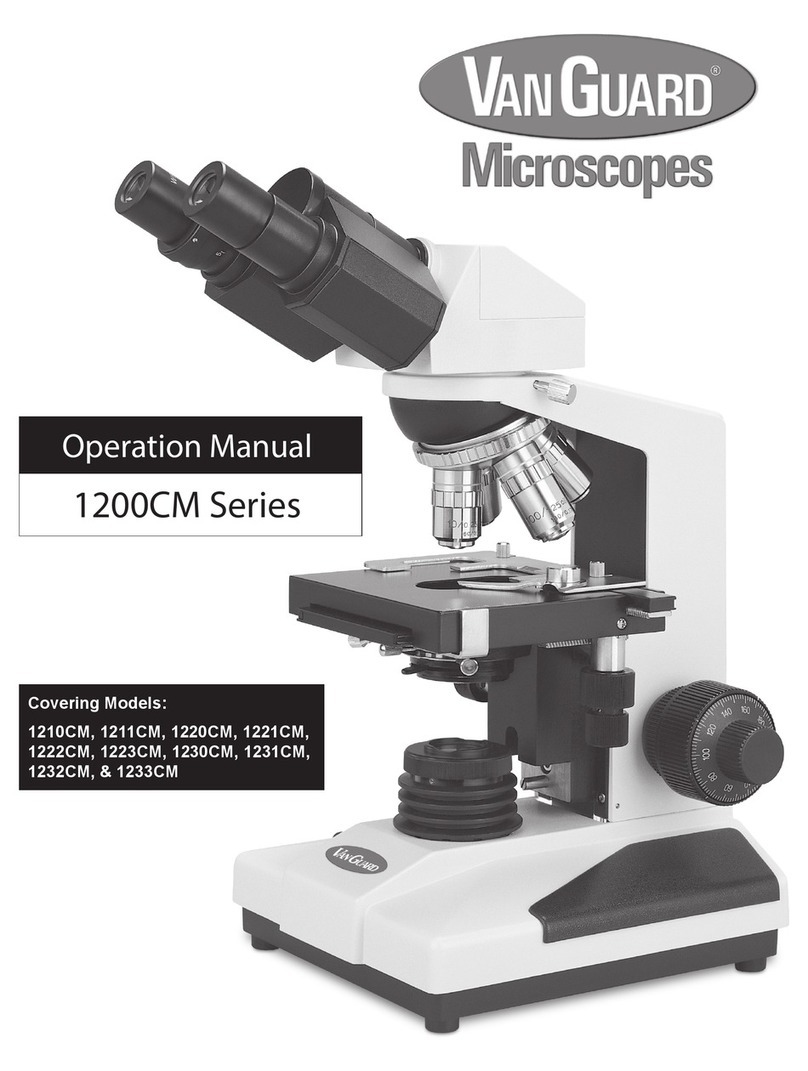Vanguard 1442MMi Industrial microscopes are suited for
brightfield and simple polarization observation of industrial
applications such as semiconductor inspection, viewing of
metallographic specimens, and crystallographic analysis.
Viewing Head. Trinocular (Seidentopf) head is inclined at
30° and features interpupillary and dioptric adjustments. The
trinocular head features a sliding main prism with a 100/0
split.
Eyepieces. 10X ultra-widefield with a field number of 22.
Nosepiece. Quintuple, ball-bearing nosepiece with high-grade
lubricant for smooth operation, and positive stops.
Objectives. The Plan Achromatic, long working distance,
infinity corrected objectives are optically coated to reduce
unwanted reflections.
Stage. The mechanical stage measures 140mm x 185mm
and includes a removable 95mm x 75mm glass insert. Motion
of mechanical stage is controlled by a right-hand, low-position
coaxial control and is driven by a rack and pinion system.
Focusing movement. Coaxial, ultra-low position coarse and
fine focus controls feature a 30mm focusing range and are
graduated to 2 microns per division. Fitted with a tension
adjustment and stage limit control.
Transmitted Condenser. The 0.85 N.A. Abbe brightfield
condenser includes an iris diaphragm and swing-in lens.
Transmitted Illumination. 30W variable quartz halogen light
source. Comes with blue and dispersion filters. Also includes
filters for simple polarization.
Reflected Illumination. 50W variable quartz halogen light
source. Comes with blue, yellow, green, and dispersion filters.
Also includes filters for simple polarization.
Body. Cast-metal, ergonomic body with stain-resistant enamel
finish.
1442MMi Industrial Microscope
Thank you for purchasing this VanGuard microscope.
With the user in mind, VanGuard microscopes are
built from modern designs and should provide a
lifetime of reliable performance. Before using this
microscope it must be properly setup, which requires
some familiarity with the microscope. For this reason
we recommend you read this entire manual carefully
before setting up and using the instrument.
IntroductionIntroduction
IntroductionIntroduction
Introduction
2
See included warranty card for more information.
Disclaimer:
The information provided in this operation manual is believed to be accurate and reliable at the time of printing. However, no responsibility shall be
assumed by VEE GEE Scientific for its use. The information contained in this document is subject to change without notification.
This product is designed and intended for use only as a microscope system. Modifying the product in any manner for use not originally intended shall
automatically void the manufacturer’s warranty. In no event shall VEE GEE Scientific, Inc. be held liable for any incidental or indirect damage arising
from the use of modified or altered product.
All rights reserved. No part of this document may be reproduced or transmitted in any form without the prior written consent of VEE GEE Scientific,
Inc.
©2012 VEE GEE Scientific, Inc.
5 Year Limited Warranty
VanGuard Microscopes are warranted by VEE GEE Scientific, Inc. to be free from defects in
material and workmanship for a period of five (5) years from the date of purchase, except for
electrical components which have a one (1) year limited warranty. During this period, VEE
GEE Scientific, or its authorized service station, will at their option and without charge, either
repair or replace any part found to be defective in materials or workmanship.
This warranty is subject to the following limitations and exceptions and will not apply if:
1) There is lack of proof of date and place of purchase. The purchase invoice must accom-
pany the unit when sent in for repair. The warranty extends to the original consumer pur-
chaser only and is not assignable or transferable.
2) The damage is due to normal wear and tear, misuse, abuse, negligence, accident, inad-
equate maintenance, disregard for operating instructions, or to any other cause not due to the
manufacture of the microscope (i.e. objective failure because of oil penetration due to lack of
timely cleaning).
3) The serial numbers, names, and/or functions are altered or obliterated; or unauthorized
repair or replacement of parts by the End-User or an unauthorized third party while under
warranty.
4) Consumable items (such as, but not limited to bulbs) have failed.
This warranty expressly excludes transportation damage and adjustment or readjustment. In
no case shall VEE GEE Scientific be liable to the Buyer or any person for any special, indirect,
incidental, or consequential damage whether claims are based in contract or otherwise with
respect to or arising out of product furnished hereunder. For goods manufactured by any
third party, VEE GEE Scientific’s liability under warranty is limited to the terms of the warranty
by the supplier for the goods. All warranty work shall be performed at the authorized service
center which is: National Microscope Exchange, Tel: (425) 788-2662. Contact your distribu-
tor or NME to discuss the problem and obtain instructions for the return of your microscope
for repair. The original purchaser returning this product must prepay all postage, shipping,
transportation, packaging, and delivery costs to NME.
www.veegee.com | 800-423-8842

